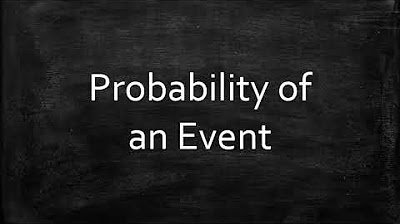1.2.5 Fixed-length Encodings
Summary
TLDRThe transcript discusses fixed-length encoding for symbols with equal probability, highlighting its advantages for random access and illustrating entropy for equally probable outcomes. Examples like binary-coded decimal and ASCII demonstrate encoding inefficiencies. The representation of unsigned integers is explained, showcasing how binary digits correspond to numeric values. It addresses the challenges of managing long binary strings and introduces hexadecimal notation as a more efficient method, detailing the conversion process from binary to hex and emphasizing the use of a '0x' prefix for clarity in programming languages.
Takeaways
- 😀 Fixed-length encoding is used when symbols have equal probability, allowing for efficient random access to encoded messages.
- 📊 Entropy measures the average information content, calculated as log2(N) for N equally probable outcomes.
- 🔢 Binary-Coded Decimal (BCD) encodes each decimal digit separately, requiring more bits than necessary for large numbers.
- 🅰️ ASCII encoding represents English text using 7 bits per character, accommodating 94 printable characters with a calculated entropy of log2(94).
- 🔢 Unsigned integers use a binary representation based on base 2, allowing conversion from binary to decimal through weighted sums.
- 📏 The maximum value for an N-bit binary number is 2^N - 1, showcasing the limits of binary representation.
- 🔍 Long binary strings can be cumbersome; hexadecimal representation (base 16) simplifies notation by grouping binary digits into sets of 4.
- ⚙️ Hexadecimal uses digits 0-9 and letters A-F, providing a compact way to represent binary values.
- 💡 The '0x' prefix is a common convention to denote hexadecimal numbers in programming languages.
- 🖥️ Efficient encoding methods are crucial in digital systems, balancing the need for accuracy and computational efficiency.
Q & A
What is fixed-length encoding, and when is it used?
-Fixed-length encoding is used when symbols occur with equal probability. It allows for random access, meaning any symbol in the encoded message can be identified by skipping a set number of bits.
How is entropy calculated for random variables with equally probable outcomes?
-The entropy for N equally probable outcomes is calculated as log2(N). Each element of the sum in the entropy formula contributes (1/N) * log2(N).
What are the inefficiencies of binary-coded decimal (BCD) encoding?
-BCD encoding represents each decimal digit separately using 4 bits, which can be inefficient for long numbers, as it may use more bits than necessary. For instance, a number with 1000 decimal digits would require 4000 bits, despite a theoretical shorter encoding.
What is ASCII, and how is it used in encoding?
-ASCII (American Standard Code for Information Interchange) is a character encoding standard that represents English text. It has 94 printing characters and uses 7 bits per character, leading to an entropy of log2(94) or about 6.555 bits.
What does unsigned integer representation entail?
-Unsigned integer representation involves using binary to represent non-negative integers, starting from 0. An N-bit binary representation can express values ranging from 0 to 2^N - 1.
Why is hexadecimal representation used, and what does it consist of?
-Hexadecimal representation, or 'hex,' is used for convenience in representing binary numbers. It is based on radix-16, where each hex digit corresponds to a group of 4 binary bits, utilizing the digits 0-9 and letters A-F.
How do you convert binary numbers to hexadecimal?
-To convert binary numbers to hexadecimal, group the binary digits into sets of 4, starting from the least significant bit. Then, use a conversion table to find the corresponding hex digit for each 4-bit pattern.
What notation is used to indicate a hexadecimal number in programming?
-In programming, a special prefix '0x' is used to indicate that a number is being represented in hexadecimal format.
What is the range of numbers that can be represented with an N-bit binary encoding?
-With an N-bit binary encoding, the smallest number that can be represented is 0, and the largest is 2^N - 1.
What are the advantages of using fixed-length encoding over variable-length encoding?
-The primary advantage of fixed-length encoding is its support for random access, which allows for efficient retrieval of specific symbols in a message without needing to decode the entire sequence.
Outlines

Esta sección está disponible solo para usuarios con suscripción. Por favor, mejora tu plan para acceder a esta parte.
Mejorar ahoraMindmap

Esta sección está disponible solo para usuarios con suscripción. Por favor, mejora tu plan para acceder a esta parte.
Mejorar ahoraKeywords

Esta sección está disponible solo para usuarios con suscripción. Por favor, mejora tu plan para acceder a esta parte.
Mejorar ahoraHighlights

Esta sección está disponible solo para usuarios con suscripción. Por favor, mejora tu plan para acceder a esta parte.
Mejorar ahoraTranscripts

Esta sección está disponible solo para usuarios con suscripción. Por favor, mejora tu plan para acceder a esta parte.
Mejorar ahoraVer Más Videos Relacionados

1.2.7 Variable-length Encoding

Information entropy | Journey into information theory | Computer Science | Khan Academy

Probability of an Event

#50 || Variable-Length Language Model|| Language Modeling || NLP || #nlp

LESSON 15 SAMPLING DESIGN

2 Shannon Fano Encoding (Algorithm, Procedure & Example) Explained in Digital Communication
5.0 / 5 (0 votes)
